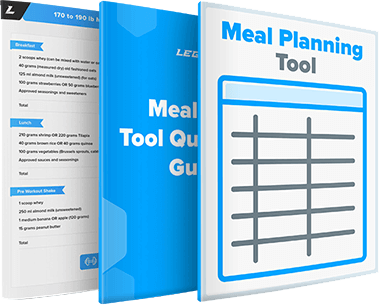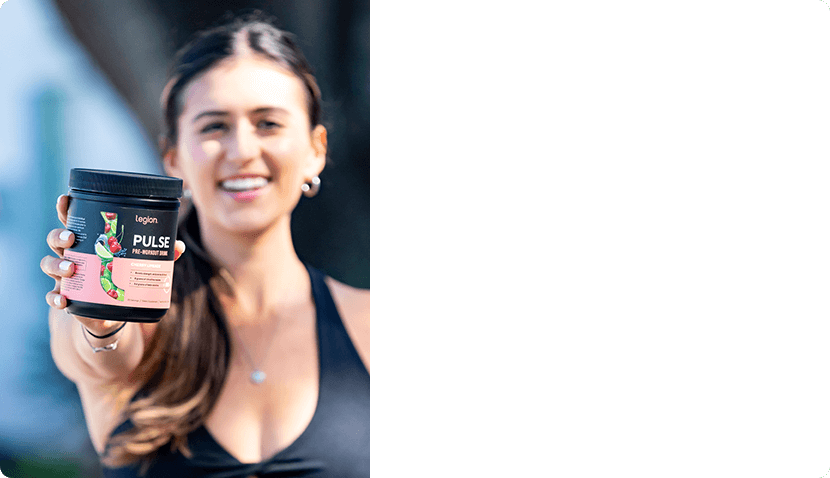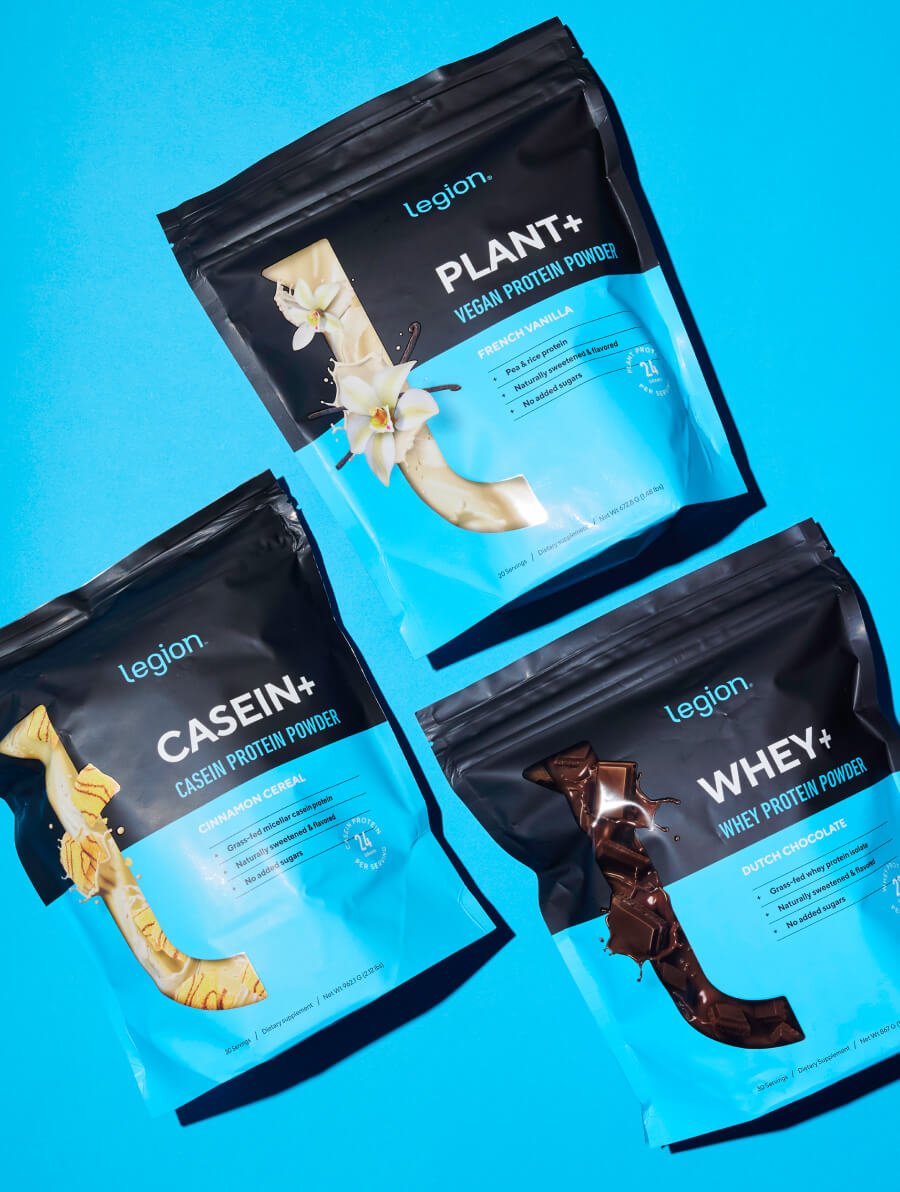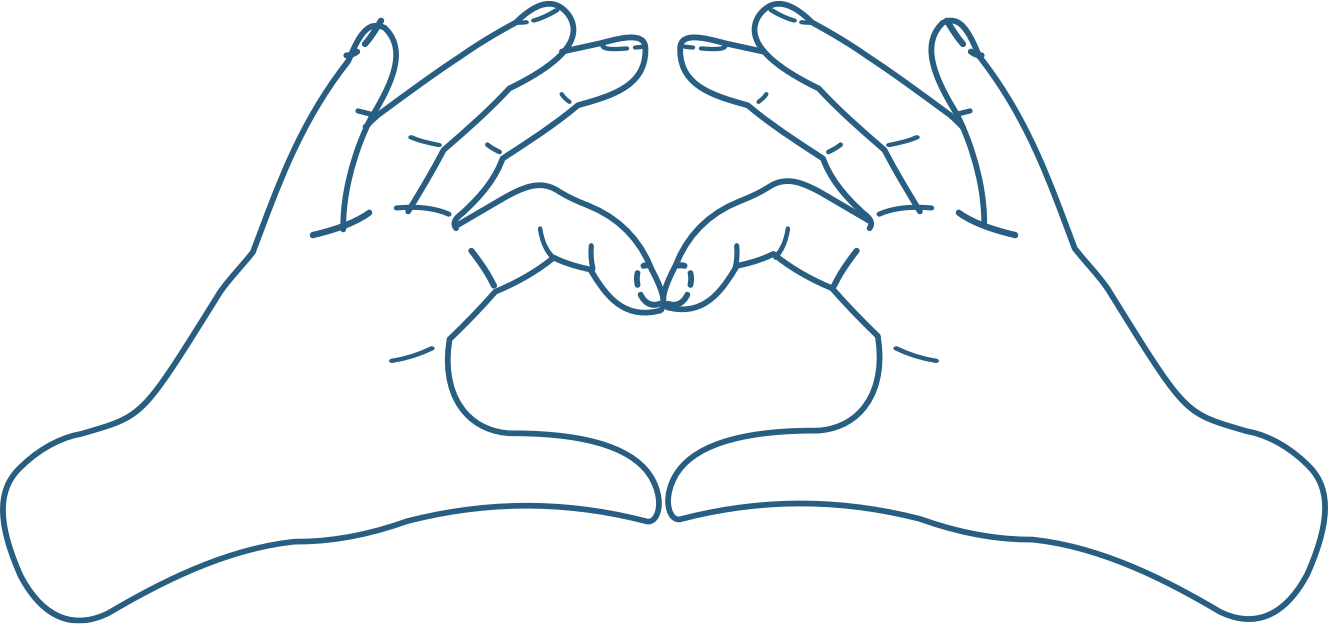You probably know what kind of physique you want, but you’re not quite sure how to best get there.
My guess is you want to be lean, strong, and muscular, and you’re struggling to understand the next immediate steps.
Should you “bulk” and focus on gaining muscle as quickly as possible, or should you “cut” and strip some fat and then bulk?
Well, both bulking and cutting have pros and cons.
Bulking adds both lean mass (yay) and body fat (boo), and cutting unveils your abs (hooray) but stunts muscle growth (hiss).
Furthermore, many people discover that they look a lot smaller after a successful cut than they anticipated. Maybe, then, they should just bulk for as long it takes to get the size they want and then go on a long cut to show it off?
Well, this is the dilemma that makes for a fitness purgatory of sorts where you don’t really commit to one strategy or another and thus stagnate in terms of progress.
In this episode, you’re going to learn how to avoid this pitfall entirely, and it starts with answering the question on your mind:
Should you cut or bulk?
As you’ll find out, the answer depends mostly on your current body fat percentage.
The long story short is if your body fat percentage is too high, your number-one priority should be getting lean, not gaining muscle, and if it’s relatively low, then you should focus on gaining muscle, not getting even leaner.
And by the end of this episode, you’ll understand why.
What did you think of this episode? Have anything else to share? Let me know in the comments below!
Transcript:
[00:00:00] Hey, this is Mike, and this episode is the first in a new series that I’m going to do where I answer one common question quickly and simply. Because While long form content is great, sometimes it’s also nice when someone just gets right to the point and tells you exactly what to do and exactly how to do it in five minutes or less.
And that’s what I’m going to be doing with these short episodes. And in this case, I answer the question, should I cut or bulk? And I answer it for both men and women. Here it is. Hey everybody, this is Mike from Muscle for Life and Legion Athletics. And every day, or at least every other day, people ask me whether they should cut bulk or do something else altogether.
Maybe try to recomp, lose fat and gain muscle at the same time [00:01:00] and so forth. And I want to give you a short and simple answer here. If you want a more in Answer, and if you want to learn exactly how to do these things properly, then head over to muscleforlife. com and search for cut bulk and you will find an article that I wrote on it.
But the long story short is if you’re a guy and you’re at 15 percent body fat. Okay. So if you’re a girl at 25 percent or above, then you should cut. Now the next question of course is cut for how long. Now there isn’t a set answer to this. I can’t say, Oh, you should cut four, six weeks, eight weeks, 10 weeks or whatever, because again, it depends on your body composition.
So guys, you want to cut down to about the 10 percent body fat range before you start bulking, before you start increasing your calories and going into a gaining phase and girls, you want to go down to about. 20 percent body fat before focusing on gaining muscle as quickly as possible. Now, there are several reasons why I recommend that you [00:02:00] do things this way.
Why if you’re a guy, you’re bulking up to let’s say 15 to 17 percent cutting it off there and then cutting back down to about 10 percent and if you’re a girl, it’s 25 to 27 at the top range of your books and then cutting back down to 20 and what it comes down to is one, you’re this way you are going to be generally happier with how you look because let’s face it, none of us like to look fat and most guys as you, once you get over 15 percent and your abs fully disappear and you just start feeling fat, same thing for girls.
It can be a little bit demotivating to put in as much time and effort into your meal planning and your workouts as you are to just not like what in the mirror. So by never letting yourself get too fat, It can just encourage you to keep going. Another reason is if you do things this way, you are going to lose more fat and less muscle when you cut for a couple of reasons.
The main one being that you won’t have to cut for nearly as long as other people that get very fat have to cut. So as a guy, if you were to [00:03:00] bulk your way up to, let’s say 25 percent body fat, and then you have to cut back down to 10 percent just to have good abs. And be able to go into a bulk properly, that’s going to take quite a while, which increases your chances of just failing altogether.
But also even if you stick to it, increases your chances of losing muscle along the way. And the same thing goes for girls. If you allow yourself to get too fat on your books. Your cuts are going to be long and you might even feel the need to starve yourself or do a ton of cardio. And that’s only going to make things worse in terms of muscle loss.
So again, by never letting yourself get too fat, your cuts really shouldn’t have to be longer than eight, 10, maybe 12 weeks on the long end, but probably closer to eight weeks. The last benefit of cutting and bulking this way is a big one and it is that you will gain more muscle and less fat when you’re bulking.
The reasons for this physiologically speaking are complex, but what it boils down to is that your body’s muscle building machinery just works better when [00:04:00] you’re lean primarily because you have higher energy levels. insulin sensitivity levels, which also helps you resist fat gain. When you’re bulking, the lower your insulin sensitivity levels are, the more fat you are going to gain when you are in a caloric surplus and vice versa.
And also your testosterone levels are naturally higher and your estrogen levels are naturally lower. When you were at a lower body fat percentage, the fatter you get, the more it depresses testosterone levels and the more it raises estrogen levels, which of course is not conducive to gaining maximum muscle and minimum fat.
So to summarize, if you’re a guy at 15 percent body fat or above, or if you’re a girl at 25 percent or above, then you want to cut. If you’re the guy you want to cut down to about 10%. If you’re the girl, you want to cut down to about 20 percent before you go into a caloric surplus and try to maximize muscle growth.
It’ll just work out better that way. Trust me. And then when you do that, if you’re the guy and you get up to [00:05:00] 15 to 17 percent body fat, It’s time to end the bulk, go back into a cut, get back down to 10 percent rinse and repeat until you have the size that you want. If you’re a girl, again, you’re bulking your way back up to 25, 6, 7 percent stopping, coming back down to 20, rinsing and repeating until you have the total amount of muscle that you want.
And then you can focus on just maintaining. You can stay lean year round. You can maybe have some fun with your workouts, try different things. Whatever. All right. That’s it for this video. I hope you liked it. And if you did, please give it a and drop a comment down below. And if you want to be notified when new cool things go live on my channel, then subscribe and I will see you soon.
Hey there, it is Mike again. I hope you enjoyed this episode and found it interesting and helpful. And if you did and don’t mind doing me a favor and want to help me make this the most popular health and fitness podcast on the internet, then please leave a quick. review of it on iTunes or wherever you’re listening from.[00:06:00]
This not only convinces people that they should check the show out, it also increases its search visibility and thus helps more people find their way to me and learn how to build their best bodies ever too. And of course, if you want to be notified when the next episode goes live, then just subscribe to the podcast and you won’t miss out on any of the new goodies.
Lastly, if you didn’t like something about the show, then definitely shoot me an email at Mike at musclefullife. com and share your thoughts on how you think it could be better. I read everything myself and I’m always looking for constructive feedback, so please do reach out. All right, that’s it. Thanks again for listening to this episode and I hope to hear from you soon.
And lastly, this episode is brought to you by me. Seriously, though, I’m not big on promoting stuff that I don’t personally use and believe in. So instead, I’m going to just quickly tell you about something of mine, specifically my 100 percent natural post workout supplement recharge. [00:07:00] Recharge helps you gain muscle and strength faster and recover better from your workouts.
And it’s also naturally sweetened and flavored, and it contains no artificial food dyes, fillers, or other unnecessary junk. All that is why it has over 700 reviews on Amazon with a 4. 5 star average and another 200 on my website, also with a 4. 5 star average. If you want to be able to push harder in the gym, train more frequently, and get more out of your workouts, then you want to head over to www.
legionathletics. com and pick up a bottle of Recharge today. And just to show how much I appreciate my podcast peeps, use the coupon code podcast to checkout, and you will save 10 percent on your entire order.
Scientific References +
- Jorge E Chavarro 1, Janet W Rich-Edwards, Bernard A Rosner, W. C. W. (n.d.). Dietary Fatty Acid Intakes and the Risk of Ovulatory Infertility - PubMed. Retrieved July 7, 2020, from https://pubmed.ncbi.nlm.nih.gov/17209201/
- Gallagher, D., Heymsfield, S. B., Heo, M., Jebb, S. A., Murgatroyd, P. R., & Sakamoto, Y. (2000). Caracterización antropométrica, nivel de actividad física y estilos de vida saludables en el personal docente, administrativo y de servicio de la Facultad de Ciencias Químicas y Farmacia de la Universidad de San Carlos de Guatemala. The American Journal of Clinical Nutrition, 72(3), 694–701. https://doi.org/10.1093/AJCN
- Zhuang, P., Zhang, Y., He, W., Chen, X., Chen, J., He, L., Mao, L., Wu, F., & Jiao, J. (2019). Dietary Fats in Relation to Total and Cause-Specific Mortality in a Prospective Cohort of 521 120 Individuals with 16 Years of Follow-Up. Circulation Research, 124(5), 757–768. https://doi.org/10.1161/CIRCRESAHA.118.314038
- Zaloga, G. P., Harvey, K. A., Stillwell, W., & Siddiqui, R. (2006). Trans fatty acids and coronary heart disease. In Nutrition in Clinical Practice (Vol. 21, Issue 5, pp. 505–512). SAGE Publications Inc. https://doi.org/10.1177/0115426506021005505
- Aykan, N. F. (2015). Red meat and colorectal cancer. In Oncology Reviews (Vol. 9, Issue 1, pp. 38–44). Page Press Publications. https://doi.org/10.4081/oncol.2015.288
- Mulholland, H. G., Murray, L. J., Cardwell, C. R., & Cantwell, M. M. (2009). Glycemic index, glycemic load, and risk of digestive tract neoplasms: a systematic review and meta-analysis. The American Journal of Clinical Nutrition, 89(2), 568–576. https://doi.org/10.3945/ajcn.2008.26823
- Howarth, K. R., Phillips, S. M., MacDonald, M. J., Richards, D., Moreau, N. A., & Gibala, M. J. (2010). Effect of glycogen availability on human skeletal muscle protein turnover during exercise and recovery. Journal of Applied Physiology, 109(2), 431–438. https://doi.org/10.1152/japplphysiol.00108.2009
- Denne, S. C., Liechty, E. A., Liu, Y. M., Brechtel, G., & Baron, A. D. (1991). Proteolysis in skeletal muscle and whole body in response to euglycemic hyperinsulinemia in normal adults. American Journal of Physiology - Endocrinology and Metabolism, 261(6 24-6). https://doi.org/10.1152/ajpendo.1991.261.6.e809
- Noakes, M., Foster, P. R., Keogh, J. B., James, A. P., Mamo, J. C., & Clifton, P. M. (2006). Comparison of isocaloric very low carbohydrate/high saturated fat and high carbohydrate/low saturated fat diets on body composition and cardiovascular risk. Nutrition and Metabolism, 3. https://doi.org/10.1186/1743-7075-3-7
- Creer, A., Gallagher, P., Slivka, D., Jemiolo, B., Fink, W., & Trappe, S. (2005). Influence of muscle glycogen availability on ERK1/2 and Akt signaling after resistance exercise in human skeletal muscle. Journal of Applied Physiology, 99(3), 950–956. https://doi.org/10.1152/japplphysiol.00110.2005
- Burke, L. M., Kiens, B., & Ivy, J. L. (2004). Carbohydrates and fat for training and recovery. Journal of Sports Sciences, 22(1), 15–30. https://doi.org/10.1080/0264041031000140527
- Helms, E. R., Aragon, A. A., & Fitschen, P. J. (2014). Evidence-based recommendations for natural bodybuilding contest preparation: Nutrition and supplementation. In Journal of the International Society of Sports Nutrition (Vol. 11, Issue 1, pp. 1–20). BioMed Central Ltd. https://doi.org/10.1186/1550-2783-11-20
- Tipton, K. D., & Ferrando, A. A. (2008). Improving muscle mass: Response of muscle metabolism to exercise, nutrition and anabolic agents. Essays in Biochemistry, 44, 85–98. https://doi.org/10.1042/BSE0440085
- Helms, E. R., Aragon, A. A., & Fitschen, P. J. (2014). Evidence-based recommendations for natural bodybuilding contest preparation: Nutrition and supplementation. In Journal of the International Society of Sports Nutrition (Vol. 11, Issue 1, pp. 1–20). BioMed Central Ltd. https://doi.org/10.1186/1550-2783-11-20
- Jensen, J., Rustad, P. I., Kolnes, A. J., & Lai, Y. C. (2011). The role of skeletal muscle glycogen breakdown for regulation of insulin sensitivity by exercise. In Frontiers in Physiology: Vol. 2 DEC. Frontiers Media SA. https://doi.org/10.3389/fphys.2011.00112
- Gergley, J. C. (2009). Comparison of two lower-body modes of endurance training on lower-body strength development while concurrently training. Journal of Strength and Conditioning Research, 23(3), 979–987. https://doi.org/10.1519/JSC.0b013e3181a0629d
- MacPherson, R. E. K., Hazell, T. J., Olver, T. D., Paterson, D. H., & Lemon, P. W. R. (2011). Run sprint interval training improves aerobic performance but not maximal cardiac output. Medicine and Science in Sports and Exercise, 43(1), 115–122. https://doi.org/10.1249/MSS.0b013e3181e5eacd
- Stephen H Boutcher. (n.d.). High-intensity Intermittent Exercise and Fat Loss - PubMed. Retrieved July 7, 2020, from https://pubmed.ncbi.nlm.nih.gov/21113312/
- Schoenfeld, B. J. (2010). The mechanisms of muscle hypertrophy and their application to resistance training. In Journal of Strength and Conditioning Research (Vol. 24, Issue 10, pp. 2857–2872). J Strength Cond Res. https://doi.org/10.1519/JSC.0b013e3181e840f3
- Halton, T. L., & Hu, F. B. (2004). The effects of high protein diets on thermogenesis, satiety and weight loss: A critical review. Journal of the American College of Nutrition, 23(5), 373–385. https://doi.org/10.1080/07315724.2004.10719381
- Helms, E. R., Aragon, A. A., & Fitschen, P. J. (2014). Evidence-based recommendations for natural bodybuilding contest preparation: Nutrition and supplementation. In Journal of the International Society of Sports Nutrition (Vol. 11, Issue 1, pp. 1–20). BioMed Central Ltd. https://doi.org/10.1186/1550-2783-11-20
- Evans, E. M., Mojtahedi, M. C., Thorpe, M. P., Valentine, R. J., Kris-Etherton, P. M., & Layman, D. K. (2012). Effects of protein intake and gender on body composition changes: A randomized clinical weight loss trial. Nutrition and Metabolism, 9(1). https://doi.org/10.1186/1743-7075-9-55
- Tipton, K. D., & Ferrando, A. A. (2008). Improving muscle mass: Response of muscle metabolism to exercise, nutrition and anabolic agents. Essays in Biochemistry, 44, 85–98. https://doi.org/10.1042/BSE0440085
- Phillips, S. M., & van Loon, L. J. C. (2011). Dietary protein for athletes: From requirements to optimum adaptation. Journal of Sports Sciences, 29(SUPPL. 1). https://doi.org/10.1080/02640414.2011.619204
- Huovinen, H. T., Hulmi, J. J., Isolehto, J., Kyröläinen, H., Puurtinen, R., Karila, T., Mackala, K., & Mero, A. A. (2015). Body composition and power performance improved after weight reduction in male athletes without hampering hormonal balance. Journal of Strength and Conditioning Research, 29(1), 29–36. https://doi.org/10.1519/JSC.0000000000000619
- Hand, G. A., Shook, R. P., Paluch, A. E., Baruth, M., Crowley, E. P., Jaggers, J. R., Prasad, V. K., Hurley, T. G., Hebert, J. R., O’Connor, D. P., Archer, E., Burgess, S., & Blair, S. N. (2013). The energy balance study: The design and baseline results for a longitudinal study of energy balance. Research Quarterly for Exercise and Sport, 84(3), 275–286. https://doi.org/10.1080/02701367.2013.816224
- Santosa, S., & Jensen, M. D. (2013). Adipocyte fatty acid storage factors enhance subcutaneous fat storage in postmenopausal women. Diabetes, 62(3), 775–782. https://doi.org/10.2337/db12-0912
- Griggs, R. C., Kingston, W., Jozefowicz, R. F., Herr, B. E., Forbes, G., & Halliday, D. (1989). Effect of testosterone on muscle mass and muscle protein synthesis. Journal of Applied Physiology, 66(1), 498–503. https://doi.org/10.1152/jappl.1989.66.1.498
- Rohrmann, S., Shiels, M. S., Lopez, D. S., Rifai, N., Nelson, W. G., Kanarek, N., Guallar, E., Menke, A., Joshu, C. E., Feinleib, M., Sutcliffe, S., & Platz, E. A. (2011). Body fatness and sex steroid hormone concentrations in US men: Results from NHANES III. Cancer Causes and Control, 22(8), 1141–1151. https://doi.org/10.1007/s10552-011-9790-z
- Wang, X., Hu, Z., Hu, J., Du, J., & Mitch, W. E. (2006). Insulin resistance accelerates muscle protein degradation: Activation of the ubiquitin-proteasome pathway by defects in muscle cell signaling. Endocrinology, 147(9), 4160–4168. https://doi.org/10.1210/en.2006-0251
- Shanik, M. H., Xu, Y., Skrha, J., Dankner, R., Zick, Y., & Roth, J. (2008). Insulin resistance and hyperinsulinemia: is hyperinsulinemia the cart or the horse? In Diabetes care: Vol. 31 Suppl 2. Diabetes Care. https://doi.org/10.2337/dc08-s264
- Zhang, J., Hupfeld, C. J., Taylor, S. S., Olefsky, J. M., & Tsien, R. Y. (2005). Insulin disrupts β-adrenergic signalling to protein kinase A in adipocytes. Nature, 437(7058), 569–573. https://doi.org/10.1038/nature04140
- Dyck, D. J., Heigenhauser, G. J. F., & Bruce, C. R. (2006). The role of adipokines as regulators of skeletal muscle fatty acid metabolism and insulin sensitivity. In Acta Physiologica (Vol. 186, Issue 1, pp. 5–16). Acta Physiol (Oxf). https://doi.org/10.1111/j.1748-1716.2005.01502.x
- Martin, C. K., Heilbronn, L. K., De Jonge, L., DeLany, J. P., Volaufova, J., Anton, S. D., Redman, L. M., Smith, S. R., & Ravussin, E. (2007). Effect of calorie restriction on resting metabolic rate and spontaneous physical activity. Obesity, 15(12), 2964–2973. https://doi.org/10.1038/oby.2007.354
- Durrant, M. L., Garrow, J. S., Royston, P., Stalley, S. F., Sunkin, S., & Warwick, P. M. (1980). Factors influencing the composition of the weight lost by obese patients on a reducing diet. British Journal of Nutrition, 44(3), 275–285. https://doi.org/10.1079/bjn19800042










